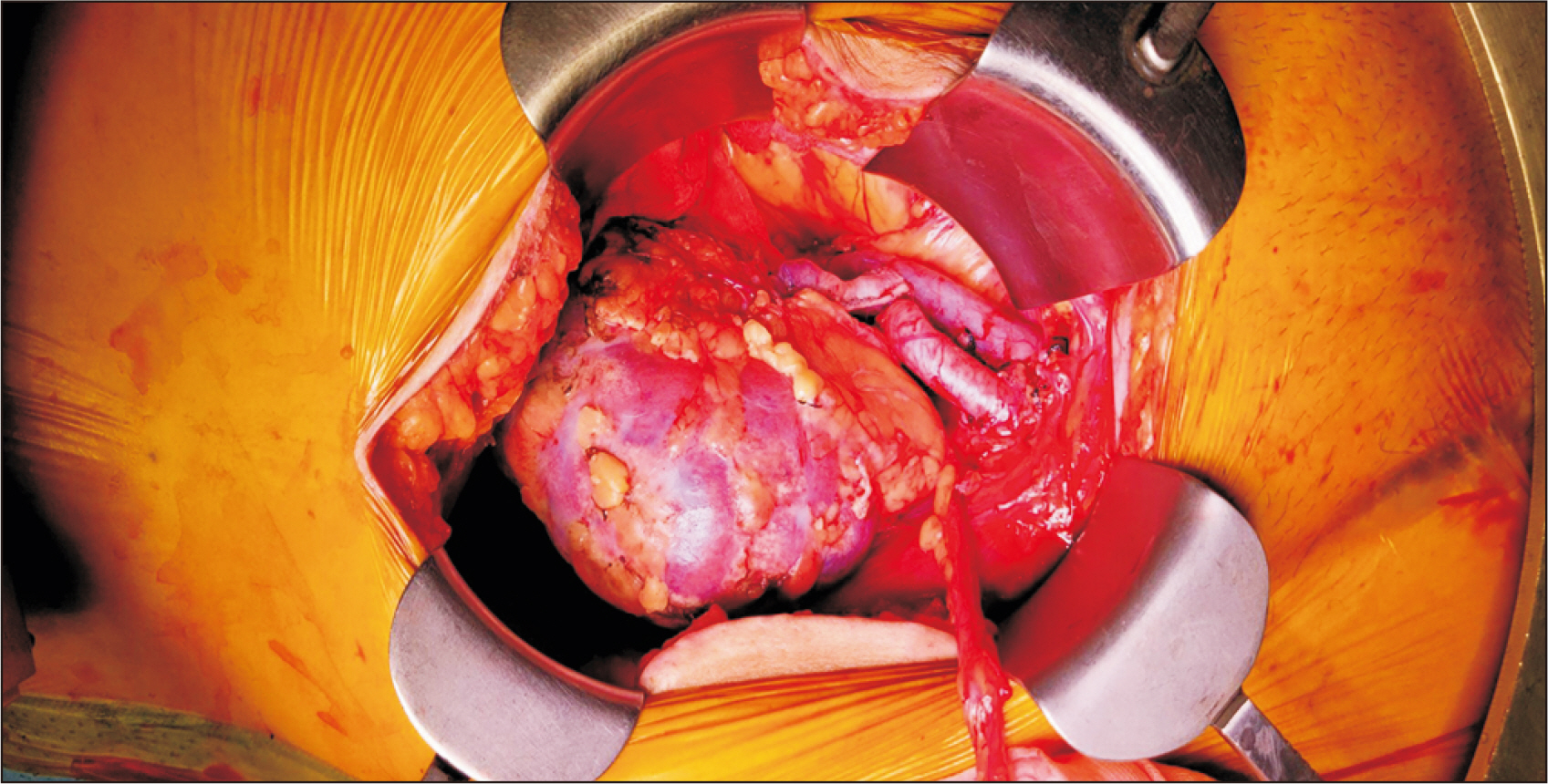Korean J Transplant.
2023 Jun;37(2):129-134. 10.4285/kjt.23.0017.
The first use of hypothermic machine perfusion in Korea to recover a procured kidney graft and prevent prolonged cold ischemic time: a case report
- Affiliations
-
- 1Department of Surgery, Jeju National University Hospital, Jeju National University College of Medicine, Jeju, Korea
- 2Department of Nursing, Jeju National University Hospital, Jeju, Korea
- 3Department of Surgery, Samsung Medical Center, Seoul, Korea
- KMID: 2544118
- DOI: http://doi.org/10.4285/kjt.23.0017
Abstract
- To overcome the shortage of donor grafts in kidney transplantation (KT), the use of marginal grafts has evolved. However, prolonged cold ischemic time (CIT) is especially critical when using marginal grafts. Recently, hypothermic machine perfusion (HMP) has been used to overcome the negative effects of prolonged CIT, and we report the first use of HMP in Korea. The donor was a 58-year-old man with severe hypoxia (PaO2 <60 mmHg, FiO2 100%) for 9 hours prior to procurement. The patient’s kidneys were the only organs accepted for transplantation, and both kidneys were assigned to Jeju National University Hospital. After procurement, the right kidney was preserved using HMP immediately, and the left kidney was directly transplanted into a patient with a CIT of 2 hours 31 minutes. The second operation was performed following the first, using the right kidney graft that had been preserved by HMP for 10 hours and 30 minutes. Although postoperative graft function gradually recovered in both patients, the serum creatinine level decreased faster in the HMP patient. Neither patient showed signs of delayed graft function, and both were discharged without significant complications. The short-term outcomes in this transplantation of mate kidney grafts demonstrated that graft function can be safely preserved using HMP, and that HMP is beneficial in overcoming the negative effects of prolonged CIT.
Keyword
Figure
Reference
-
1. Heilman RL, Smith ML, Kurian SM, Huskey J, Batra RK, Chakkera HA, et al. 2015; Transplanting kidneys from deceased donors with severe acute kidney injury. Am J Transplant. 15:2143–51. DOI: 10.1111/ajt.13260. PMID: 25808278.
Article2. Pascual J, Zamora J, Pirsch JD. 2008; A systematic review of kidney transplantation from expanded criteria donors. Am J Kidney Dis. 52:553–86. DOI: 10.1053/j.ajkd.2008.06.005. PMID: 18725015.
Article3. Hernandez D, Estupinan S, Perez G, Rufino M, Gonzalez-Posada JM, Luis D, et al. 2008; Impact of cold ischemia time on renal allograft outcome using kidneys from young donors. Transpl Int. 21:955–62. DOI: 10.1111/j.1432-2277.2008.00708.x. PMID: 18564990.
Article4. Moers C, Smits JM, Maathuis MH, Treckmann J, van Gelder F, Napieralski BP, et al. 2009; Machine perfusion or cold storage in deceased-donor kidney transplantation. N Engl J Med. 360:7–19. DOI: 10.1056/NEJMoa0802289. PMID: 19118301.
Article5. Brat A, de Vries KM, van Heurn EW, Huurman VA, de Jongh W, Leuvenink HG, et al. 2022; Hypothermic machine perfusion as a national standard preservation method for deceased donor kidneys. Transplantation. 106:1043–50. DOI: 10.1097/TP.0000000000003845. PMID: 34172648. PMCID: PMC9038234.
Article6. Faro ML, Akhtar MZ, Boffa C, Ploeg R. 2015; Should pulsatile preservation be the gold standard in kidney transplantation? Curr Transpl Rep. 2:105–12. DOI: 10.1007/s40472-015-0063-8.
Article7. Yuan X, Theruvath AJ, Ge X, Floerchinger B, Jurisch A, García-Cardena G, et al. 2010; Machine perfusion or cold storage in organ transplantation: indication, mechanisms, and future perspectives. Transpl Int. 23:561–70. DOI: 10.1111/j.1432-2277.2009.01047.x. PMID: 20074082.
Article8. Shin YH, Lee T, Chang WB. 2022; The significance of the first living donor kidney transplantation in Jeju: a case report. Korean J Transplant. 36:231–5. DOI: 10.4285/kjt.22.0033. PMID: 36275993. PMCID: PMC9574429.
Article9. Guy A, McGrogan D, Inston N, Ready A. 2015; Hypothermic machine perfusion permits extended cold ischemia times with improved early graft function. Exp Clin Transplant. 13:130–7.10. Jochmans I, Moers C, Smits JM, Leuvenink HG, Treckmann J, Paul A, et al. 2010; Machine perfusion versus cold storage for the preservation of kidneys donated after cardiac death: a multicenter, randomized, controlled trial. Ann Surg. 252:756–64. DOI: 10.1097/SLA.0b013e3181ffc256. PMID: 21037431.11. Watson CJ, Wells AC, Roberts RJ, Akoh JA, Friend PJ, Akyol M, et al. 2010; Cold machine perfusion versus static cold storage of kidneys donated after cardiac death: a UK multicenter randomized controlled trial. Am J Transplant. 10:1991–9. DOI: 10.1111/j.1600-6143.2010.03165.x. PMID: 20883534.
Article12. van der Vliet JA, Kievit JK, Héné RJ, Hilbrands LB, Kootstra G. 2001; Preservation of non-heart-beating donor kidneys: a clinical prospective randomised case-control study of machine perfusion versus cold storage. Transplant Proc. 33:847. DOI: 10.1016/S0041-1345(00)02343-5. PMID: 11267094.
Article13. Jeong E, Baik S, Park H, Oh J, Lee Y, Lee JM. 2021; First organ donation after circulatory death following withdrawal of life-sustaining treatment in Korea: a case report. J Korean Med Sci. 36:e171. DOI: 10.3346/jkms.2021.36.e171. PMID: 34128599. PMCID: PMC8203855.
Article14. Kim JM, Kim SJ, Joh JW, Kwon CH, Song S, Shin M, et al. 2011; Kidney donation after cardiac death in Korea. Transplant Proc. 43:1434–7. DOI: 10.1016/j.transproceed.2011.01.185. PMID: 21693213.
Article
- Full Text Links
- Actions
-
Cited
- CITED
-
- Close
- Share
- Similar articles
-
- Overcoming the most prolonged cold ischemia time in Korea using hypothermic machine perfusion in deceased donor kidney transplantation
- Overcoming the longest cold ischemia time yet seen in Korea using hypothermic machine perfusion in deceased donor kidney transplantation: a case report
- Cold but not too cold: advances in hypothermic and normothermic organ perfusion
- The significance of the first living donor kidney transplantation in Jeju: a case report
- Abdominal Aortic Aneurysm Repair in Post Kidney Transplanted Patients





